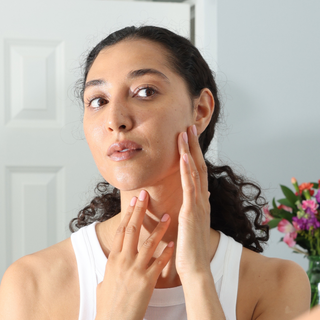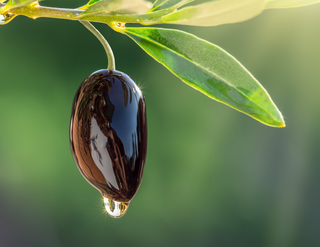Surface active agents, more commonly known as surfactants, are the workhorse ingredients in cleansing products but can also serve as emulsifiers. Surfactants pick up dirt and grime and rinse away with water. They can do this very important job because of their structure (Figure 1). There is a water-loving (hydrophilic) headgroup and a water-repelling (hydrophobic) tail.
 |
Figure 1: General depiction of a surfactant
The tails of these molecules will surround an impurity like dirt and encapsulate it. Thanks to the water loving part of this molecule, water is attracted to the headgroups of the surfactants, allowing the impurities to be rinsed away (Figure 2).

|
Figure 2: General depiction of how surfactants remove impurities
While surfactants are very good at removing things, they are not good at differentiating what is good and bad. The problem with surfactants is that they can interact with and remove natural proteins and lipids, leaving our skin feeling dry. Using a cleanser that strips the skin can damage our skin barrier and change the pH of our skin over time. Luckily there are many surfactants available, so you’ll be able to find a product that cleanses your face without stripping it.
P.S. Sometimes surfactants can’t take all the blame, be sure you’re only cleansing your face 2 times a day max!
Below are some tips when shopping for a surfactant/cleanser:
- If you have dry skin, try a cream or oil cleanser.
- If you have oily skin, try a gel or foaming cleanser.
- If you have sensitive skin, look for surfactants like cocoamidopropyl betaine, coco glucoside, lauryl glucosides or sodium lauroyl isethionate.
- Sulfates are powerful, effective cleansers but can sometimes be irritating to people with sensitive skin.
- Combining multiple surfactants can reduce irritation potential.
- Look for other moisturizing and soothing ingredients within the product like glycerin, oat kernel extract and hyaluronic acid.
- If you purchase a cleanser that your face doesn’t respond well to, use it as a body wash.
There will be some trial and error when seeking a surfactant that works well with your skin. Remember that your environment heavily impacts your skin and that you may need to switch to a different surfactant as the seasons change. Pay attention to how your skin responds, it will tell you what it likes and doesn’t like.








